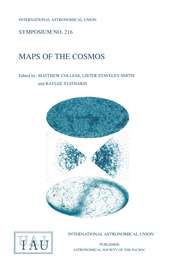Article contents
Ground-based & WFPC2 Imaging of Fornax: Spatial Variations in Star Formation History
Published online by Cambridge University Press: 25 May 2016
Abstract
Fornax shows a radial age gradient. The old population is the most extended one similar to what was found in other dwarf galaxies, while younger populations are more centrally concentrated. With ≈ −1.2 dex the dominant intermediate-age population is much more metal-rich than the oldest populations traced by Fornax's globular clusters (≈ −2 dex, 15–11 Gyr). Star formation appears to have proceeded continuously with decreasing rates rather than in distinct episodes. Fornax contains the youngest population ever found in a dwarf spheroidal galaxy, 100–200 Myr, which makes its apparent lack of gas even more puzzling.
- Type
- Part 2: The Database
- Information
- Symposium - International Astronomical Union , Volume 192: The Stellar Content of Local Group Galaxies , 1999 , pp. 165 - 169
- Copyright
- Copyright © Astronomical Society of the Pacific 1999
References
- 1
- Cited by


